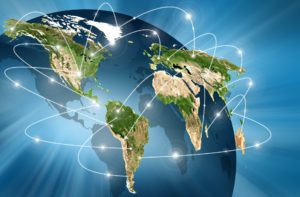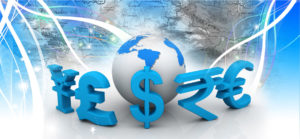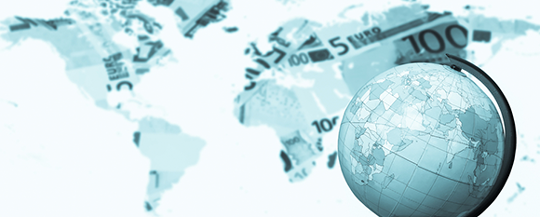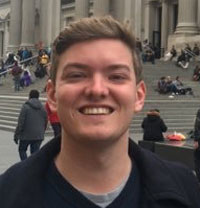Szeri NosBiggs Trading asks, Is the US Dollar Dying before our eyes?
The U.S dollar has been the world’s reserve currency since World War II. The U.S. dollars strength is based on the general confidence in the United States Government as a super power. Many now ask is that still the case? We believe its time to serious consider this as a coming reality and prepare.
Studying special drawing rights (SDR), read this entry directly from wikepedia entry for the basics.
Special drawing rights (ISO 4217 currency code XDR,[1] also abbreviated SDR) are supplementary foreign-exchange reserve assets defined and maintained by the International Monetary Fund (IMF). The XDR is the unit of account for the IMF, and is not a currency per se.[2] XDRs instead represent a claim to currency held by IMF member countries for which they may be exchanged.[3] The XDR was created in 1969 to supplement a shortfall of preferred foreign-exchange reserve assets, namely gold and the U.S. dollar.[3]
XDRs are allocated to countries by the IMF.[3] Private parties do not hold or use them.[4] The amount of XDRs in existence was around XDR 21.4 billion in August 2009. During the global financial crisis of 2009, an additional XDR 182.6 billion were allocated to “provide liquidity to the global economic system and supplement member countries’ official reserves”. By October 2014, the amount of XDRs in existence was XDR 204 billion.[5]
The value of the XDR is based on a basket of key international currencies reviewed by IMF every five years.[3] The weights assigned to each currency in the XDR basket are adjusted to take into account their current prominence in terms of international trade and national foreign exchange reserves.[3] In the review conducted in November 2015, the IMF decided that the Renminbi (Chinese yuan) would be added to the basket effective October 1, 2016.[6] From that date, the XDR basket now consists of the following five currencies: U.S. dollar 41.73%, Euro 30.93%, Renminbi (Chinese yuan) 10.92%, Japanese yen 8.33%, British pound 8.09%.[7]
IMO the new world money, allows one to understand exactly what is happening and how it will impact the world.
“Good as Gold”
Following the conclusion of World War II, the United States held an estimated 60% of all of the world’s gold reserves officially on record. As one of the few regions that was geographically isolated from being a physical battleground, war-inflicted countries had high demand for U.S goods and services that were continuing to produce at high levels without major disruption.
The massive flow of capital both in and out of the United States in the 1940s left considerable fear of dollar shortages in order to account for demand.
As European countries began to rebuild, so did their gold and dollar reserves. Once the European continent and other developed countries began redeveloping their national currency institutions, an overwhelming demand to convert dollars back to gold began. 
The U.S status as “good as gold” was no longer as hot on demand as the ultimate reserve currency. The international demand hit critical mass and pressure mounted for a diplomatic resolution.
The IMF: A Global World Banker
Developed at a United Nations gathering in Bretton Woods, New Hampshire in 1944 the international community sought to build a new monetary system.
The gathering was officially titled the United Nations Monetary and Financial Conference. The outcome would bring about the creation of International Bank for Reconstruction and Development (IBRD) and the International Monetary Fund (IMF). These institutions were the first of their kind.
The IBRD would later develop under the World Bank Group of organizations which would be responsible for developing poverty reduction programs. The World Bank primarily functions as an institution that offers loans to developing countries and a variety of infrastructure based projects in the developing world.
At the time the organization was built up with 44 member state countries. Respectively, every participating member put forward constructive efforts to build a method for economic cooperation in order to not only save succeeding generations from the scourge of war but to avoid another Great Depression of the 1930s that devastated the global economy.
At the time of its creation the IMF was established in order to maintain stability and effectiveness of the international monetary system. The IMF was directed by the participating member states to ensure a secure system of exchange rates and ultimately facilitate countries in having international financial transactions with one another.
The former head of the IMF, Dominique Strauss-Kahn, was forced in 2011 to resign after a major required him to step down.
Currently, Christine Lagarde, another French national holds the title of Managing Director. Lagarde is the fifth French head of the organization and the first female to hold such a role. She has also face considerable legal backlash and eventually was convicted in French courts on charges of misusing public funds.
Examining its counterpart, the World Bank is currently under leadership of its 12th American leader. American nationals have unanimously held the Presidency role at the World Bank since the Bretton Woods inception.
Both organizations are headquartered in Washington, D.C and are within several blocks of the White House. The traditions held of both the IMF and the World Bank will later prove to be critical in the shaping of this new world money.
As the spread of the fiat currency system continued, it took leadership finesse to not only sell the system being proposed – but to impose a system to rival the dominance of the U.S dollar in the future. World money was not the end goal, it was a byproduct of leadership understanding and member state desires for separating from the U.S dollar.
Soviet Opposition
At the time, the United States controlled nearly two thirds of all of the official gold reserves in the world.
Under these conditions, the U.S dollar and gold would be the standards at which the world would flock toward for security and stability.
 During the Bretton Woods gatherings, the former Soviet Union was present and had representatives in attendance but would decline ratification of the final conclusions from the meetings.
During the Bretton Woods gatherings, the former Soviet Union was present and had representatives in attendance but would decline ratification of the final conclusions from the meetings.
The USSR would charge that the institutions creation were simply, “branches of Wall Street.”
A later Soviet Foreign Ministry memorandum discovered from December 1945 revealed the central sentiments of the gathering by summarizing,
“It is known that the Americans made credits to Britain conditional on joining the Fund… [A]s the government of the USA did not offer the USSR a credit… our membership in these organizations could be read as our weakness, as a forced step taken under the pressure of the USA Our negative attitude toward membership in the Fund and the Bank would show our independent position in this matter.”
Ben Steil, author of “The Battle of Bretton Woods: John Maynard Keynes, Harry Dexter White, and the Making of a New World Order,” even theorizes that the Soviet Union saw the gathering as a point to instruct a senior U.S. Treasury official who was deemed a Soviet spy, Harry Dexter White to undermine efforts of major British economists.
The Soviets viewed the gathering at the Mt. Washington Hotel in Bretton Woods as the U.S positioning itself to take over from Great Britain’s history of dominance as a global financial power and to officially lament the dollar as the major global reserve currency.
Read the full and unedited version of this article written by
here at dailyreckoning.com


